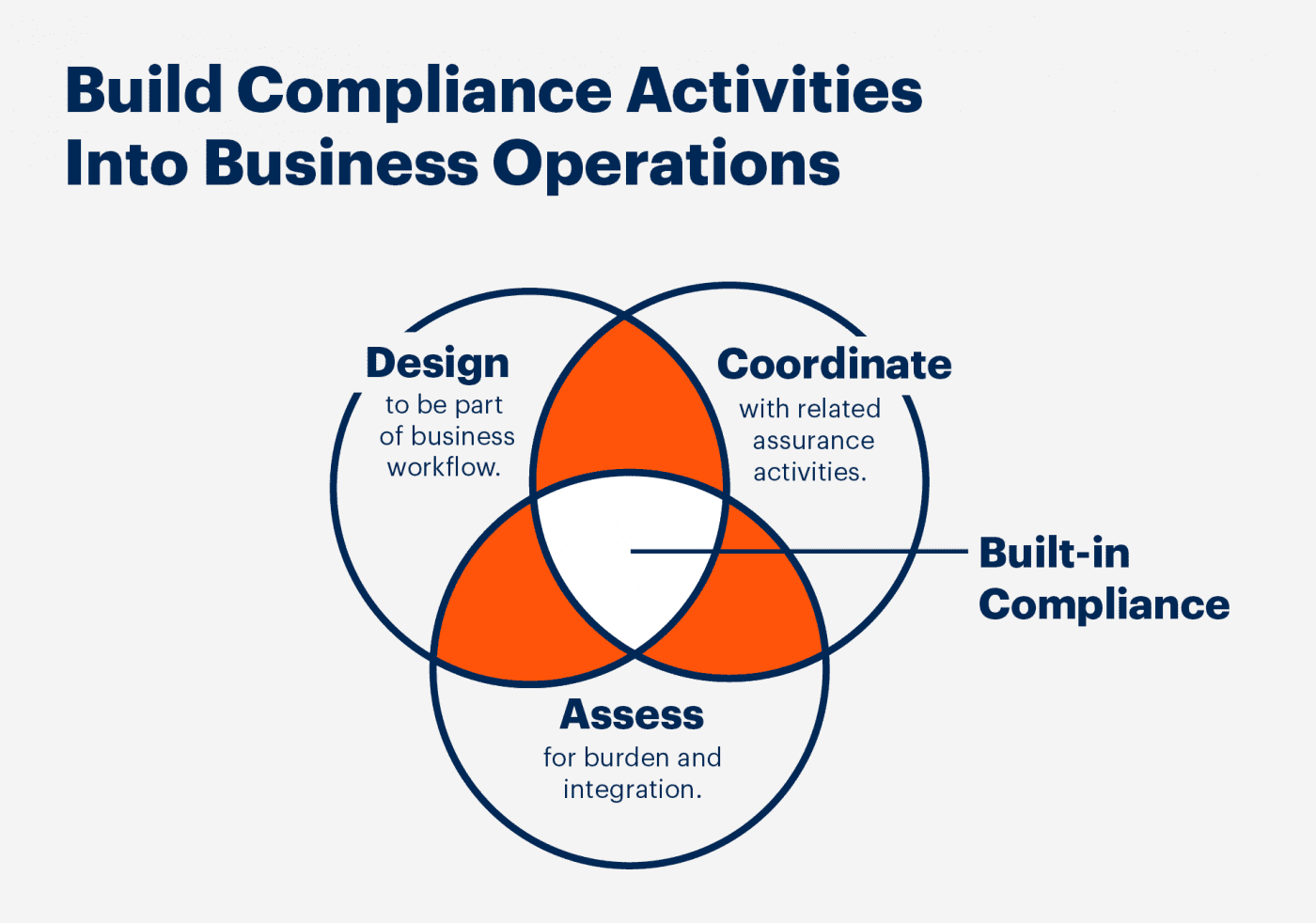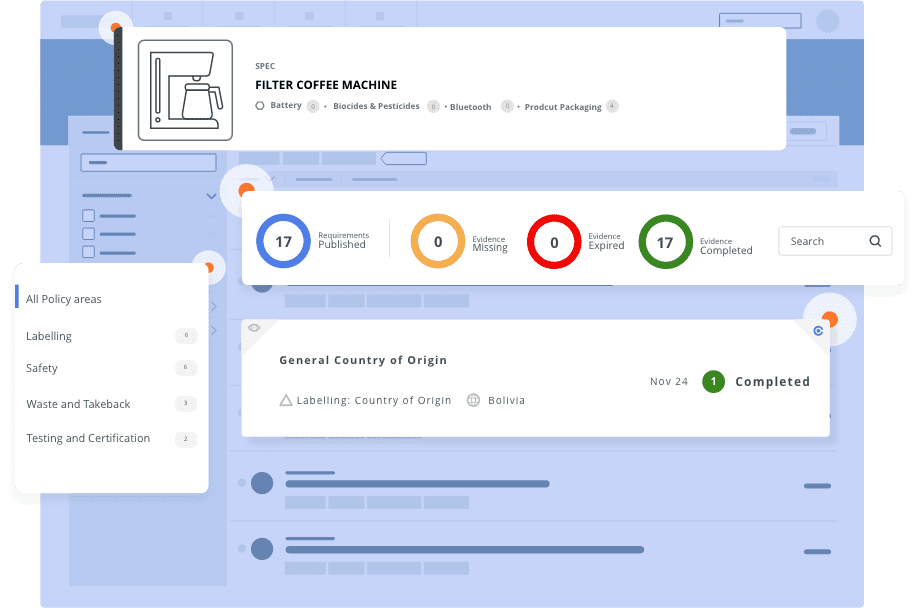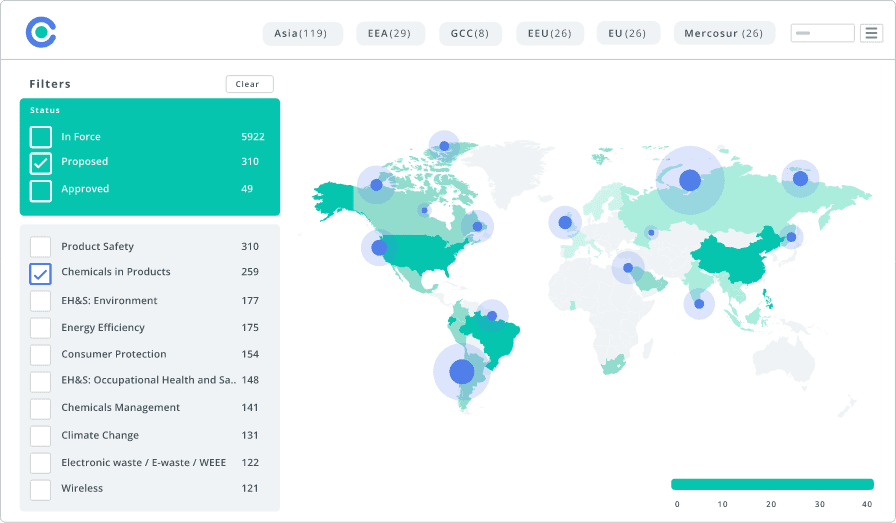
Product Compliance Success: 20 Hacks From 20 years of Experience

Introduction
We at Compliance & Risks, have spent the last 2 decades fine-tuning Product Compliance Solutions for the world’s leading brands – meaning we have a ton of intrinsic learnings to share for Product Compliance success. Over the past 20 years, the field of compliance has evolved significantly, and several key learnings have emerged from our experiences researching the market and working with our customers who have implemented industry-leading compliance programs.
In this blog post, we will explore 20 valuable insights gained from over 20 years of building for successful product compliance teams. We hope these learnings can help you navigate the complexities of product compliance and establish a strong foundation for your organization.
Hack No. 1: Steer Away From Share Points & Spreadsheets…
Managing product compliance is a complex task that requires careful attention to detail & adherence to ever-changing regulations. In today’s digital age, relying on outdated tools like SharePoint & spreadsheets can hinder the efficiency & effectiveness of your compliance management processes. We recommend you steer away from these tools & consider adopting modern compliance software solutions that are specifically designed to streamline compliance management.
SharePoint, while a useful collaboration platform, lacks the specialized features necessary for comprehensive product compliance management. It may not provide the functionality required to track regulatory updates, manage certifications, and automate compliance workflows. Additionally, spreadsheets, although versatile, are prone to human errors, version control issues, and limitations when it comes to data analysis and reporting.
Our customers who have tested and moved on from spreadsheets say,
“Managing test results of 1000s of products was a …Nightmare”
“The internet is a wonderful thing, but it made our team go crazy!”
“We need a dedicated tool!”
“It’s like drinking from a water hose…”
Hack No. 2: Think With A Business Mindset…
To achieve a successful compliance program, it’s important to think beyond mere regulatory adherence and embrace a business mindset. This approach involves aligning compliance efforts with organizational goals and using compliance as a competitive advantage.
Having a business mindset means recognizing that compliance is not just a regulatory burden, but a chance to improve operational efficiency, manage risks, and gain customer trust. It entails incorporating compliance into strategic decision-making and treating it as a fundamental aspect of the overall business strategy.
Quoting Gartner, “To be impactful, compliance programs must be built into the operations of the business rather than functioning as a separate process tacked onto employee workflows and systems.” (See image 1 below, Source: Gartner)
- Connect compliance to company results
- Manage the portfolio
- Align teams using risk & revenue data
- Consider the cost of compliance and ROI
Watch our recent webinar to learn more about taking your compliance strategy to the next level.

Image 1: Building Compliance Teams with a business mindset, Source: Gartner
Hack No. 3: Leverage Technology To Your Advantage…
Technology offers tools and solutions that streamline compliance processes, enhance efficiency, and ensure regulatory adherence. By embracing technology, you can overcome challenges associated with manual and outdated compliance management methods.(See image 2 below, source: Compliance & Risks).
Some of the benefits of leveraging technology for product compliance include,
- Automation: One of the key advantages of leveraging technology for product compliance is automation. Compliance software solutions provide features such as regulatory updates, document management, task tracking, and reporting capabilities. These tools automate repetitive tasks, reduce human errors, and save valuable time, allowing compliance teams to focus on higher-value activities.
- Centralized data management – corporate memory: Technology enables centralized data storage, improving data accuracy, collaboration, and simplifying information retrieval during audits or regulatory inquiries.
- Staying ahead of regulatory changes: Compliance software includes features that track and communicate updates to regulations, standards, and certifications. Real-time notifications help compliance teams adapt best practices and ensure ongoing compliance with the latest requirements.
- Easy Data analysis & reporting: Compliance software tools offer robust reporting capabilities, generating comprehensive compliance reports effortlessly. These reports provide valuable insights, identify gaps or areas for improvement, and support informed decision-making.
- Communication & alignment: Technology facilitates effective communication and collaboration within the compliance team and across departments. Digital platforms and communication tools enable seamless information sharing, ensuring all stakeholders are informed and aligned on compliance objectives.

Image 2: Product compliance management system, Source: C2P Product Compliance Solution
Hack No. 4: Continuously Improve…
Improving your product compliance program is crucial for regulatory adherence, efficiency, and keeping up with industry trends. By adopting a mindset of continuous improvement, organizations can pinpoint areas to optimize, implement changes, and excel in their compliance processes.
It’s important to recognize that building a successful compliance program takes time, and continuous improvement starts with a commitment to regularly evaluate and assess the program. Regularly review internal processes, policies, and procedures to identify potential gaps, bottlenecks, or areas of non-compliance. This evaluation can be supported by internal audits, stakeholder feedback, and benchmarking against industry best practices. Fostering a culture of continuous improvement establishes a foundation for long-term success and enables organizations to adapt to evolving compliance landscapes.
- Benchmark and measure
- Identify inefficiencies
- Foster a collaborative culture
Hack No. 5: Engage In Effective Risk Management Practices…
By proactively identifying and mitigating compliance risks, organizations can protect their operations, brand reputation, and regulatory adherence.
- Thorough assessments: Start by assessing potential compliance risks associated with products and processes. Evaluate regulatory requirements, industry standards, and best practices relevant to your product portfolio. Identify areas prone to non-compliance, such as product design, sourcing, manufacturing, labeling, and distribution.
- Risk mitigation strategies: Develop and implement strategies to mitigate compliance risks. This may involve establishing internal controls, implementing standard operating procedures, and improving documentation practices. Clearly define roles and responsibilities within the compliance team and communicate expectations across the organization to ensure accountability.
Effective risk management practices ensure ongoing compliance, foster accountability, and empower organizations to confidently navigate the complexities of product compliance.
Hack No. 6: Systematic Product Portfolio Management…
To ensure successful product portfolio compliance, start by understanding the regulatory requirements for each product. This involves identifying relevant regulations, standards, certifications, and industry-specific requirements. A centralized compliance database or system can help organize this information for easy access.
Establish a systematic approach to assess and classify products based on their compliance needs. Categorize products considering their regulatory complexity, risk levels, and specific compliance requirements. This helps allocate resources efficiently and prioritize efforts. The classification can guide decisions on compliance investments, resource allocation, and risk mitigation strategies.
Hack No. 7: Prioritize Building Corporate Memory…
To build a corporate memory for a product compliance program, it’s important to document and archive essential compliance information. This includes regulatory requirements, industry standards, certifications, evidence documents, and internal procedures. Creating a centralized knowledge repository allows compliance teams, employees, and stakeholders to access this information easily.
Hack No. 8: Help Drive Product Innovation & Market Opportunities…
Compliance efforts are often driven by new product developments and roadmaps. Exceptional compliance leaders take it a step further by leveraging strategic opportunities identified by their teams to influence product roadmaps.
Compliance can also open doors to new opportunities and markets. Many industries and sectors require compliance certifications or adherence to specific regulations for market access. By meeting these requirements, you can expand your business reach and target new customer segments or geographies.
Hack No. 9: Utilize External Subject Matter Expertise…
When dealing with intricate compliance challenges, it’s beneficial to involve external compliance experts. Their expertise can complement your team’s skills, offer specialized knowledge, and help tackle complex compliance issues.
Hack No. 10: Harness Into The Power Of A Partner Network…
Establish partnerships with external organizations like industry associations and regulatory consultants. These partnerships offer valuable insights, support, and guidance for navigating complex compliance landscapes.
Hack No. 11: Global Coverage…
If your organization operates globally, it’s crucial to be aware of compliance requirements in different regions and countries. Take into account regional variations and tailor your compliance program to ensure global adherence. (See image 3 below, source: Compliance & Risks)
Consider investing in a translation solution that can provide services in regional languages to ensure compliance with local regulations.

Image 3: Global Regulations Monitoring by C2P Product Compliance Solution, Source: Compliance & Risks
Hack No. 12: Invest In A SaaS Solution…
Use compliance software to streamline and automate compliance processes. This software can help manage regulatory updates, track evidence certifications, and generate compliance reports. Invest in user-friendly, industry-specific compliance software to boost efficiency.
Hack No. 13: Work Out A One-Stop-Compliance Ecosystem…
It’s vital to recognize that every organization operates uniquely. Therefore, having a thorough understanding of your compliance ecosystem, including dependencies and integrations, is crucial. Implementing a comprehensive compliance resource solution can greatly contribute to the success of your compliance program.
Hack No. 14: Focus On The Ultimate Benefit For Your Business…
“Revenue is put at risk in markets where you are not fully covered.”
Danny Cassidy, SVP Growth, Compliance & Risks
Compliance is not just a regulatory burden but a strategic opportunity to boost your business’s success. Integrate compliance into your overall business strategy to support and enhance core operations. Use compliance as a competitive advantage to build customer trust, improve efficiency, and strengthen your brand reputation.
By focusing on the benefits for your business, compliance becomes more than a checkbox exercise. It becomes a strategic tool that drives positive outcomes, improves efficiency, builds trust, and unlocks new opportunities. By integrating compliance into your business strategy, you can ensure long-term success and establish your business as an industry leader.
Hack No. 15: Communicate Your Success…
Effective communication is a must for building trust, gaining stakeholder support, and enhancing the reputation of the compliance department in your organization.
To communicate success in the product compliance process, share key milestones and achievements. Highlight completed compliance audits, obtained certifications, and notable improvements in compliance metrics. Regularly updating stakeholders on these milestones shows progress and generates excitement about the impact of your compliance program.
Additionally, demonstrating tangible benefits resulting from the compliance program can make a significant impact. Show cost savings achieved through streamlined processes, fewer compliance incidents, or improved supply chain transparency. By quantifying and presenting these benefits, you can showcase the positive impact that compliance has on the organization’s bottom line.
Hack No. 16: Have A Compliance ‘Motto’…
A compliance “motto” can inspire and guide compliance teams, fostering a culture of compliance and driving success. It’s a short and memorable phrase that represents the core values and aspirations of the compliance program.
- Inspires & motivates your team
- Instills a sense of purpose & unity
- Reinforces your commitment to compliance
When selecting a compliance motto, it’s important to consider your organization’s values, goals, and industry context. Your compliance motto should be concise, memorable, and in line with your company culture. It should resonate with your compliance teams & stakeholders, instilling a sense of pride and dedication to ethical behavior.
For instance, a global medical devices manufacturer adopted the motto “Zero Compliance Surprises,” which significantly influenced their compliance efforts and contributed to their overall success. A thoughtfully crafted compliance motto can leave a lasting impression on the compliance program and positively impact your organization’s achievements.
Hack No. 17: Technology + Content + Expertise = Success…
Combining technology, content, and expertise is a winning formula for compliance teams’ success. This powerful combination enables organizations to navigate regulatory complexities, streamline processes, and enhance compliance outcomes.
Technology plays a crucial role in empowering compliance teams. Compliance software, automation tools, and data management systems streamline processes, automate tasks, and ensure accuracy. These technologies enable efficient data collection, analysis, and reporting, enhancing overall compliance efforts.
Content refers to up-to-date regulatory information, industry standards, and best practices. Compliance teams need access to comprehensive and relevant content to understand and comply with evolving regulations. Centralized knowledge repositories, regulatory databases, and partnerships with industry experts provide valuable content resources.
Expertise is essential in interpreting and applying regulatory requirements. Subject matter experts within compliance teams understand regulations, identify risks, and develop effective adherence strategies. Expertise can be developed through training, certifications, and continuous professional development.
Integrating technology, content, and expertise is a recipe for compliance team success. By leveraging technology, accessing relevant content, and cultivating expertise, teams can navigate compliance requirements, mitigate risks, and demonstrate a strong compliance culture. This holistic approach empowers teams to achieve compliance excellence and contribute to the organization’s overall success.
Hack No. 18: Foster Cross-Functional Collaboration…
Product compliance is a multidisciplinary effort. Encourage collaboration between compliance teams, R&D, procurement, quality assurance, and other relevant departments. Effective cross-functional communication enhances compliance awareness and facilitates streamlined processes.
Hack No. 19: Invest In Continuous Compliance Training…
Provide ongoing training opportunities to keep your compliance team up to date with the latest regulations, industry trends, and best practices. Encourage professional certifications and organize regular training sessions to foster skill development and maintain compliance expertise.
Hack No. 20: With The Right Strategy & Tools – Compliance Can ‘Not’ Be Boring! 🙂
Do any of the above hacks seem interesting? Our team of experts are available to help you implement a Successful Product Compliance Strategy. Talk to us today to learn more.
Learn from our experts. We have a complementary consultation offer for you.
Talk to us to know more.



